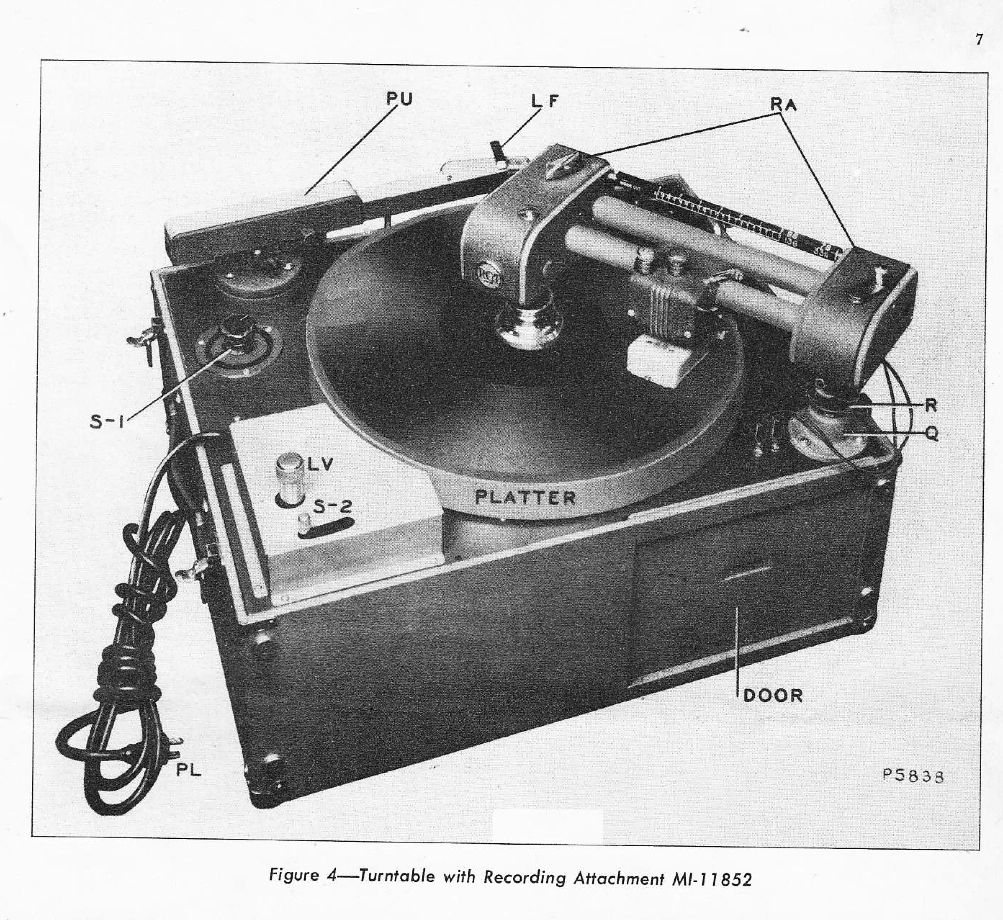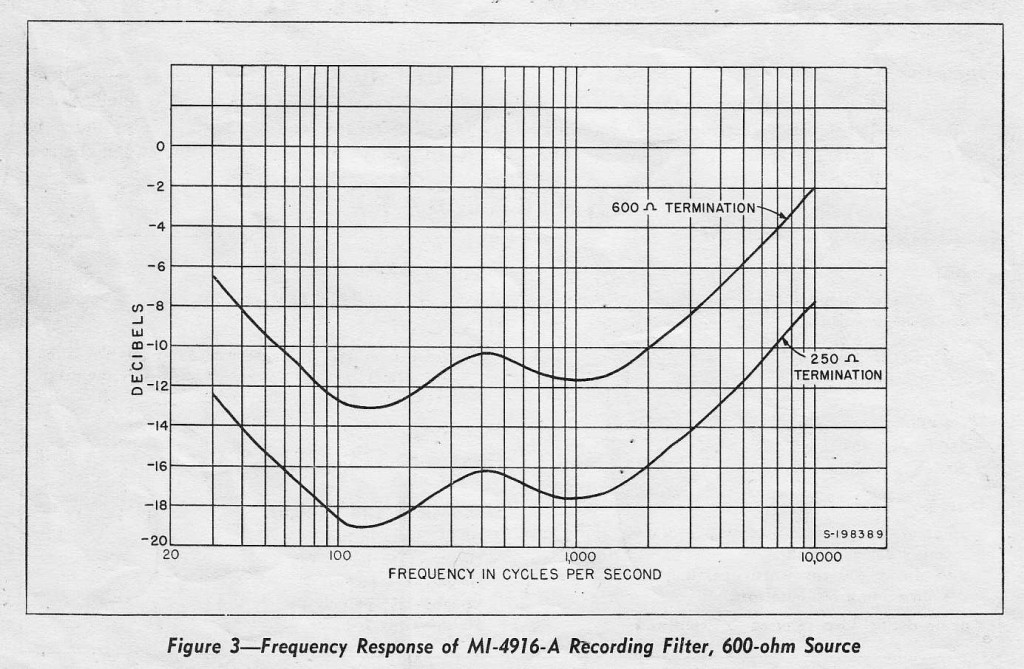 Most days in the studio end with me making WAV or MP3 files of scratch mixes or final masters. I will then upload, copy, or email the files to the musicians. It takes mere moments to do this. 60 years ago the process of creating a listening copy was considerably more difficult. The engineer would need to literally cut a record from the studio tape. And the record was not a literal exact transcription of the tape; the input signal to the record-cutting head required considerable equalization so in order to make a record that would ‘playback’ properly on the equipment of the day. Click on the links below to download the manuals for the RCA ‘Recording Attachment’ Type 72-D and 72-DX, aka MI-11901/MI-11900. The ‘recording attachment’ was an assembly that would be mounted on a turntable. It consisted of an arm, with various provisions to adjust tracking pressure and record timing, and a cutting head. The second PDF is the manual/schematic for the ‘Recording Filter’ M1-4916-A, which was a passive fixed-equalizer that provided for the then-current ‘orthacoustic’ frequency-response characteristic.
Most days in the studio end with me making WAV or MP3 files of scratch mixes or final masters. I will then upload, copy, or email the files to the musicians. It takes mere moments to do this. 60 years ago the process of creating a listening copy was considerably more difficult. The engineer would need to literally cut a record from the studio tape. And the record was not a literal exact transcription of the tape; the input signal to the record-cutting head required considerable equalization so in order to make a record that would ‘playback’ properly on the equipment of the day. Click on the links below to download the manuals for the RCA ‘Recording Attachment’ Type 72-D and 72-DX, aka MI-11901/MI-11900. The ‘recording attachment’ was an assembly that would be mounted on a turntable. It consisted of an arm, with various provisions to adjust tracking pressure and record timing, and a cutting head. The second PDF is the manual/schematic for the ‘Recording Filter’ M1-4916-A, which was a passive fixed-equalizer that provided for the then-current ‘orthacoustic’ frequency-response characteristic.
‘Orthacoustic’ response was a pre-RIAA record compensation curve necessitated by the the intrinsic flaws of record-lacquer material and turntable-mechanics of the 1930s. Confused yet? Read this very informative Wiki article on the history of the (still in use in 2010) RIAA compensation curve and all will be made clear (maybe).
Here are the manuals…
